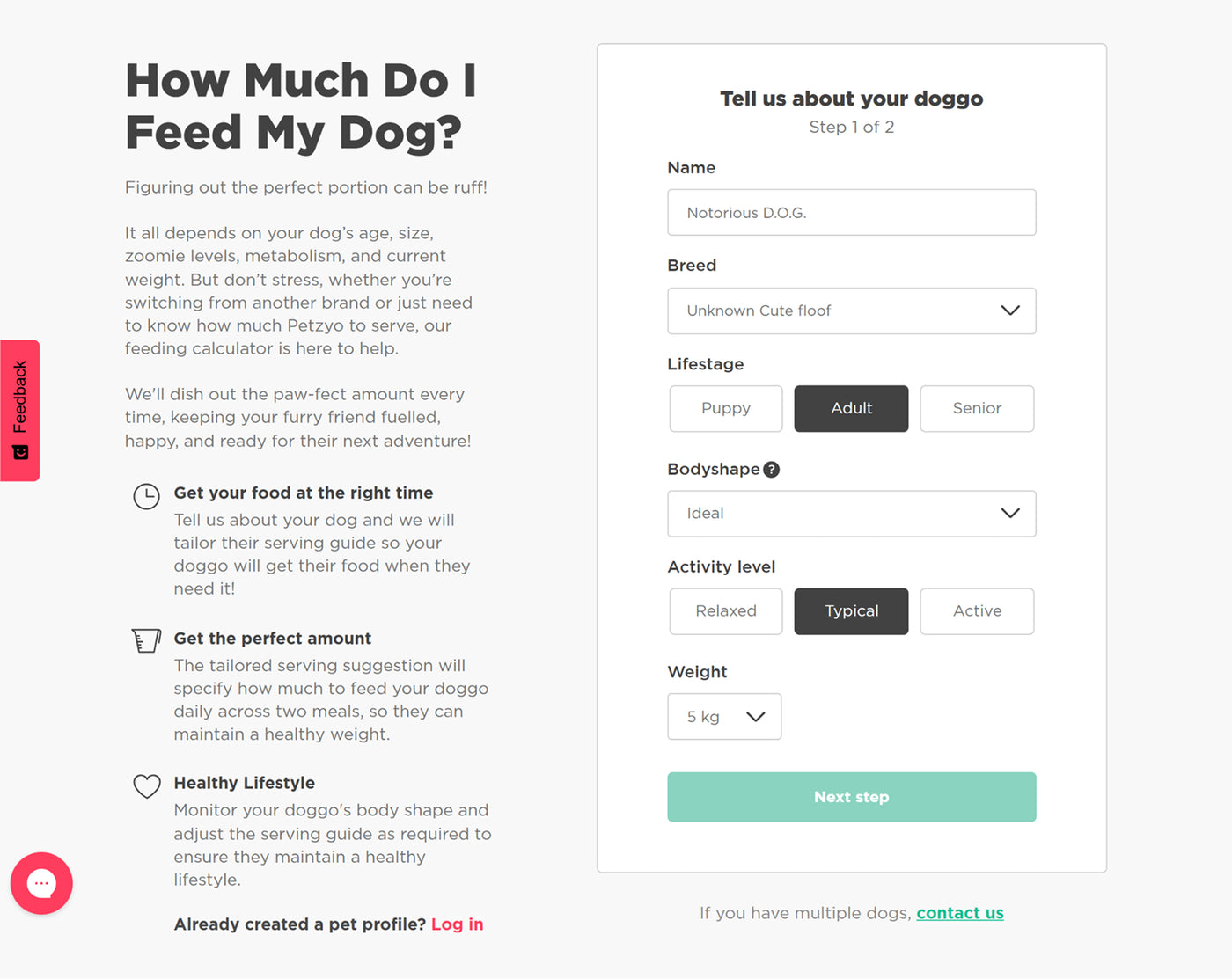Petzyo Top Breed Guide
German Shepherd

QUICK FACTS
Height: 55-65 cm (male), 50-60 cm (female)
Weight: 30-40 kg (male), 22-32 kg (female)
Lifespan: 9-13 years
Breed Group: Working Dog
Energy Level: High
Shedding Level: Moderate to heavy
Temperament: Loyal, intelligent, courageous
Grooming Requirements:
Regular brushing, seasonal coat care
- Breed Overview
- Physical & Appearance
- Personality
- Health & Diet
- Grooming & Care
- Cost & Ownership
Origins of German Shepherd
The German Shepherd wasn’t born out of coincidence - it was crafted with purpose. Bred to be the ultimate working dog, it had to be intelligent enough to herd, fearless enough to protect, and fiercely loyal to stand by your side through anything. From fields and frontlines to family homes, their spirit and purpose remain the same.
The German Shepherd was developed in the late 1800s by Max von Stephanitz, a former German cavalry captain. Stephanitz believed that working ability was more important than looks, and he set out to create a dog that was strong, intelligent, and reliable. His foundation dog, Horand von Grafrath, became the very first officially registered German Shepherd in 1899. Bred from the best sheepdogs across Germany, Horand set the standard for the loyal, powerful breed we know today.

Fun fact about German Shepherd

It didn’t take long for the German Shepherd’s sharp mind and fearless loyalty to catch the world's attention. By the early 1900s, they were serving in military and police roles across Europe.
During World War I and World War II, German Shepherds served as messengers, search-and-rescue dogs, guard dogs, and ambulance assistants, often saving lives under extreme conditions.
Today, they remain one of the top breeds chosen for K9 units, thanks to their bravery, obedience, and unmatched ability to work alongside humans.
BREED SUMMARY
The German Shepherd is a large, athletic, and highly versatile breed, easily recognisable by its strong, muscular build, upright stance, and confident gait. Originally bred in Germany in the late 1800s for herding and working roles, this breed combines power, agility, and endurance in one impressive package. Their thick double coat provides year-round protection, shedding moderately but experiencing heavier "coat blows" in the spring and autumn.
Renowned for their intelligence, loyalty, and courage, German Shepherds form deep bonds with their families and thrive when engaged in purpose-driven activities. They are naturally protective without being overly aggressive, making them excellent guardians and companions. With proper training, early socialisation, and daily mental and physical stimulation, they can remain well-mannered, confident, and reliable in various settings. However, their strong emotional connection with their owners means they do not cope well with long periods of isolation, and they require structured routines to stay balanced.
While they are generally resilient, German Shepherds are prone to certain health concerns, including hip and elbow dysplasia, bloat, and degenerative myelopathy. A proactive approach to their health—regular veterinary check-ups, joint support, weight management, and parasite prevention—can help them live between 9 to 13 years. Their ideal diet should be rich in high-quality animal protein to support lean muscle, include omega-3 fatty acids for joint and coat health, and provide low-glycemic carbohydrates like sweet potato for sustained energy. Functional supplements, such as probiotics for digestion, can also be beneficial. Measured portions, healthy treats, and daily exercise are essential for maintaining their fitness, preventing obesity, and ensuring that this remarkable breed remains active, sharp, and full of life.
FAQs About German Shepherd
Is a German Shepherd a good family dog?
Yes, a German Shepherd is a good family dog when properly trained, socialised, and given daily exercise.
How long do German Shepherds live?
German Shepherds live an average of 9 to 13 years with proper health care, diet, and exercise.
What is the weakness of a German Shepherd?
The weakness of a German Shepherd is their tendency toward hip dysplasia, digestive sensitivities, and strong emotional attachment.
What dogs look like German Shepherds?
Dogs that look like German Shepherds include the Belgian Malinois, Dutch Shepherd, and King Shepherd.
How fast can a German Shepherd run?
A German Shepherd can run at speeds of up to 48 kilometres per hour when fully grown and fit.
What is the bite force of a German Shepherd?
The bite force of a German Shepherd is estimated at around ~17 to ~21 kg/cm2.
Coat type
Coat length
Physical & Appearance
There’s no mistaking a German Shepherd. They’re built for purpose, power, and performance. With their upright posture, athletic frame, and confident stride, every feature reflects a breed designed for endurance, intelligence, and agility.
Let’s explore the physical characteristics that make the German Shepherd one of the most admired and versatile dogs in the world.
German Shepherds' Muscular Build
German Shepherds are known for their strong, athletic physiques. Their well-developed muscles give them the power and agility needed for everything from herding livestock to chasing down suspects. This muscular build isn’t just for show. It’s a key reason why they excel in demanding roles and remain active, energetic companions.
Standard Coat Colours
German Shepherds come in a variety of coat colours, although not all are accepted for conformation showing under official breed standards. While coat colour can add to their visual appeal, responsible breeders focus first on health, temperament, and structural soundness, never just the coat shade.

Black and tan
The classic look most people picture

Sable
A dynamic mix of dark and light hairs

Black
Solid black, striking and sleek

White
Rare, beautiful, but not accepted for show standards

Blue
A diluted black, considered non-standard and rarer
Do German Shepherds Have Blue Eyes?
It’s very rare, but some German Shepherds can have blue eyes, typically linked to unique coat colour genetics, such as blue or white coats.
In standard-bred German Shepherds, eye colour is almost always brown, amber, or dark, matching their intelligent, focused personality. Blue eyes in an adult German Shepherd often suggest a non-standard lineage or mixed genetics and are not considered a breed standard trait.
Affectionate with family
Good with kids
Social doggos
Playfulness
Temperament and Personality of German Shepherds

German Shepherds are confident, highly trainable, and deeply in tune with their human companions. They are always eager to have a purpose and be part of the team.
They thrive on structure, routine, and meaningful connection, making them not just excellent working dogs but also devoted family members. Let’s explore what makes the German Shepherd’s personality so iconic, and what it’s like to share your life with one.
Interaction with Family, Strangers, and Other Pets
German Shepherds form deep bonds with their families. They’re attentive, affectionate without being clingy, and thrive when involved in daily routines. Most will quietly follow family members from room to room, keeping a watchful eye, especially over children they’ve grown up with.
When meeting strangers, German Shepherds are naturally cautious and observant. They typically assess before engaging, remaining calm and controlled rather than overly reactive. Early socialisation plays a crucial role in ensuring they develop confident, well-balanced behaviour around unfamiliar people.
With other pets, German Shepherds can coexist peacefully, especially when raised alongside them. They tend to be respectful and disciplined, but without proper structure, dominance-related tension, particularly with other dogs of the same sex can arise. Consistent training, early exposure, and strong leadership help foster harmony in multi-pet households.
Protective Instincts Without Unprovoked Aggression
German Shepherds are naturally protective, but that doesn't equate to unwarranted aggression. Their guarding instincts are rooted in their history as herding and service dogs, trained to assess threats and act only when necessary.
A well-bred, well-trained German Shepherd is calm, confident, and measured. They don’t lash out without cause but will stand firm if their loved ones are at risk.
With proper training, early socialisation, and clear leadership, their protective nature becomes a powerful asset, shaped into reliable, composed behaviour that fits perfectly within a family environment.
Tolerance for Alone Time
While German Shepherds can handle being left alone for moderate periods, they’re not a breed that thrives on solitude. Their deep emotional connection to their people means they may develop separation anxiety if left unstimulated or isolated too frequently.
Without sufficient mental and physical enrichment, boredom and frustration can lead to unwanted behaviours such as excessive barking, destructive chewing, or escape attempts. Gradually increasing alone time, using puzzle toys or enrichment games, and maintaining a consistent routine can help them feel secure and content when you're away.
Behaviour Challenges in German Shepherd
German Shepherds are known for their intelligence, loyalty, and versatility. However, these traits can sometimes lead to behavioral challenges, particularly when the dog’s physical and mental needs are not properly met.
High Energy and Destructiveness
As highly active dogs, German Shepherds need one to two hours of exercise each day. Without sufficient physical and mental stimulation, they can become bored and destructive, chewing on furniture, digging, or engaging in other unwanted behaviors.
Irritation from Lack of Engagement
If they don't have enough to do, German Shepherds may exhibit frustration and irritation, which can result in undesirable behaviors. They thrive when given tasks or challenges to solve.
Strong Drive and Prey Instinct
With a history as herding dogs, they have a strong prey drive. They may chase small animals like squirrels, rabbits, or even other pets if not properly trained or contained. A leash or a securely fenced yard is essential when outside.
German Shepherd Lifespan & Health Issues
The German Shepherd is a remarkable breed known for its intelligence, loyalty, and versatility. However, as with all breeds, they come with specific health concerns that owners should be aware of. Both genetic predispositions and environmental factors often influence the breed’s relatively short lifespan.
What is the lifespan of a German Shepherd?
The average lifespan of a German Shepherd typically ranges between 9 to 13 years. While not the longest-lived breed, German Shepherds can enjoy a high quality of life when provided with proper care and attention. These dogs often require proactive veterinary support throughout their lives, particularly for issues related to their joints and spine. With regular health monitoring, good nutrition, and an active lifestyle, German Shepherds can remain vibrant and full of energy well into their senior years.
Common Health Problems in German Shepherds
German Shepherds are tough, but not invincible. Early diagnosis means better outcomes. Don’t wait for vet visits if your dog seems off. These are the conditions most commonly seen in the breed, not guaranteed, but worth staying ahead of:
1. Hip Dysplasia
A malformed hip joint that leads to arthritis and pain. Common signs to look out for include stiffness, trouble standing, bunny hopping
2. Elbow Dysplasia
Abnormal bone growth in the elbow joint. If your German Shepherd is limping, showing swelling, or is reluctant to bear weight, it might have Elbow Dysplasia.
3. Degenerative Myelopathy (DM)
An uncommon progressive spinal disease that affects mobility generally manifests as hind leg weakness, dragging paws, and a wobbly gait.
4. Bloat (GDV)
Twisting of the stomach, life-threatening if untreated. Symptoms include swollen belly, dry retching, restlessness. Consider a surgical gastropexy for your German Shepherd at desexing.
5. Cancer of the Spleen (Haemangiosarcoma)
A cancer of the spleen that can cause life-threatening internal bleeding. Watch for signs such as weakness and fatigue, pale gums, collapse, and an enlarged belly.

Recommended Veterinary Care Schedule for German Shepherds
Consistent vet care is key to keeping your German Shepherd healthy at every life stage:
- Puppies: Vet visits every 3–4 weeks until the full vaccination series is complete. X-rays of the hips at around 16 weeks of age (Penn Hip Scores) can be useful to check if your GSD is developing hip dysplasia.
- Adults: Annual check-ups with a full physical exam and dental cleaning. Consider a surgical procedure called a ‘prophylactic gastropexy’ at desexing to prevent GDV (bloat)
- Seniors (7+ years): Biannual visits with added routine blood work, and an ultrasound every 1 to 2 years, to catch age-related issues early
- Parasite Prevention: Regular flea, tick, and worming treatments — monthly or quarterly as recommended by your vet
Daily Routine Care for German Shepherds
Investing in routine care helps detect issues early and reduces the risk of costly emergencies down the road.
- Dental care: Brush their teeth 2–3 times per week or use dental chews
- Weight checks: Shepherds should stay lean—excess weight can strain joints
- Joint support: Ask your vet about supplements like fish oil and green lipped mussel powder glucosamine as your Shepherd ages
German Shepherd Nutrition & Diet Guide
German Shepherds are high-energy dogs. They need nutrition that powers their active lifestyle, supports joint health, and keeps their coat, digestion, and overall vitality in top form as they age. The amount of food a German Shepherd needs depends on age, size, body condition and activity level. A general guideline is to feed meals as follows, with adjustments for growing puppies or working adults.
- Puppies (2–6 months): 3–4 small meals per day
- Adolescents (6–18 months): 2–3 meals per day
- Adults (18+ months): 2 meals per day
- Seniors (7+ years): Smaller, easily digestible portions split into 2–3 meals
For example, a 30kg adult typically requires 2 and ⅔ cups of Petzyo’s Chicken & Turkey kibble per day, depending on energy output.
Best Food for German Shepherd
The ideal diet for a German Shepherd supports lean muscle, strong joints, a well-regulated immune system, healthy digestion, and a glossy coat. Look for food that includes:

High-quality proteins from real meat sources like chicken, kangaroo, beef, or fish.

Moderate fat content to maintain energy without promoting excess weight.

Low-glycemic carbohydrates such as sweet potato. Avoid fillers like corn, wheat, and soy.

Functional supplements such as Ascophyllum nodosum (kelp) for dental health, omega-3s for coat, joints and inflammation, and probiotics for gut health.
Choose complete and balanced formulas suitable for ‘all breeds’ or ‘large breeds’, preferably Australian-made with transparent labelling. Avoid products with artificial colours, vague meat meals, or excessive cereals.
Managing Weight and Preventing Obesity
Obesity is a leading but preventable contributor to disease risk in German Shepherds, contributing to joint stress, breathing problems, and a shorter lifespan. Maintain a healthy weight by:
Prevent weight gain by:
- Measuring meals precisely - avoid free-feeding
- Feeding based on body condition, not just appetite
- Splitting meals into two servings daily
- Choosing healthy treats, like lean, air-dried meats or raw veggies
- Incorporating daily exercise and enrichment to burn energy
Check their body condition monthly. You should feel their ribs without pressing hard, and see a clear waistline when viewed from above. Always adjust based on body condition and follow your chosen food brand’s feeding guidelines. But don’t stress, whether you’re switching from another brand or just need to know how much Petzyo to serve, our feeding calculator is here to help.

Shedding Amount
Drooling
Coat Grooming Needs
Trainability
Mental Stimulation Needs
German Shepheard Grooming & Maintenance
German Shepherds are resilient working dogs, but they’re far from low-maintenance. Their iconic double coat requires regular care, their joints need close attention, and several breed-specific health concerns are worth knowing from the start. With the right grooming routine and proactive health care, you’ll help your Shepherd stay strong, healthy, and comfortable for years to come.
Do German Shepherd Shed?
German Shepherds are also known for their thick double coat and the shedding that comes with it. They shed moderately year-round, but in Australia’s climate, heavy seasonal shedding typically happens once or twice a year, often during the transitional months of autumn and spring. However, because some parts of Australia have less distinct seasonal changes, shedding patterns can vary slightly depending on the region and whether the dog lives indoors or outdoors.
Their undercoat acts as natural insulation, helping them stay warm in winter and cool in summer. Regular brushing, ideally two to three times a week helps manage shedding, prevent matting, and maintain healthy skin and coat condition.

Maintaining a Healthy German Shepherd Coat
The dense double coat of a German Shepherd offers excellent protection in all climates, but it also sheds heavily, especially during seasonal changes. To keep their coat in top condition and your home fur-free:
- Brush 3–4 times a week with an undercoat rake or slicker brush
- Increase to daily brushing during spring and autumn when shedding peaks
- Check frequently for mats behind the ears, under the collar, and around the legs
- Use a de-shedding tool every two weeks during coat-blow periods
Routine grooming not only keeps their coat looking great but also helps you catch skin issues, ticks, or irritations early.
Bathing Guidelines for German Shepherds
Unlike some breeds, German Shepherds don’t require frequent bathing. A wash every 6 to 8 weeks is typically sufficient, unless they get into something smelly or muddy.
- Use a pH-balanced, dog-safe shampoo to protect their skin
- Rinse thoroughly to prevent residue buildup, which can cause irritation
- Dry completely, especially the undercoat, to avoid trapped moisture
Over-bathing can strip essential oils from their skin, so it's best to prioritise brushing and an omega-rich diet over frequent baths for long-term coat health.
Training & Exercise Needs for German Shepherd
Training a German Shepherd isn’t just recommended, it’s essential. These intelligent, driven dogs are born to work, eager to learn, and thrive on clear direction. Without structure, they’ll channel their energy elsewhere, and that often means chewed-up shoes, holes in the yard, or other creative chaos.
To raise a calm, confident, and well-mannered companion, training must begin early, remain consistent, and be paired with daily mental and physical stimulation. When properly guided, a German Shepherd becomes one of the most capable, loyal, and dependable dogs you’ll ever meet.
Daily Exercise and Mental Stimulation Needs
A healthy adult German Shepherd requires around 90 minutes of daily exercise, balanced between physical activity and mental engagement. While long walks help, these dogs truly thrive with variety, including:
- Obedience drills or agility work
- Tug-of-war, scent games, or puzzle toys
- Off-leash exploration in secure spaces
Without sufficient stimulation, their energy can turn into frustration or destructive behaviour. A well-exercised Shepherd is fulfilled, focused, and balanced.
Beginning Obedience Training from Day One
Training should begin as soon as your German Shepherd puppy arrives home, typically around 8 weeks old. Early obedience lays the groundwork for a confident, well-behaved adult. Focus on:
- Name recognition and basic cues (sit, stay, come)
- Calm indoor behavior and settling
- Gentle handling and grooming routines
- Positive exposure to new people, environments, and sounds
Short, upbeat sessions (5–10 minutes) that use rewards and play keep your puppy engaged and eager to learn.

Building Social Confidence Through Early Exposure
German Shepherds need more than obedience, they need structured socialisation with healthy, fully vaccinated dogs, to grow into well-rounded, confident adults. While the ideal window is between 8 and 16 weeks, socialisation should continue well into adulthood.
Just remember to limit socialisation with one or two trusted, healthy and fully vaccinated dogs in a safe home environment until your puppy’s vaccination schedule is complete.
To foster calm, composed behaviour in public or around guests:
- Introduce new environments gradually and positively
- Reward curiosity with treats or praise
- Avoid overwhelming situations or unpredictable dogs; steady exposure builds trust
- Maintain a calm demeanour; your dog will follow your lead
Consistent socialisation helps prevent fear-based reactions and ensures your
Managing Drive and Preventing Destructive Behaviours
German Shepherds aren’t hyperactive, they’re highly driven. When that drive isn’t given a proper outlet, it often turns into chewing, digging, barking, or pacing. The key is proactive engagement and purposeful routines.
A sample balanced day might include:
- Morning: Brisk walk followed by a food-dispensing puzzle
- Midday: Training session focused on obedience or new tricks
- Evening: Scent work, fetch, or structured play
- Downtime: Enrichment toys like lick mats or safe chews
Rotate activities throughout the week to keep things fresh. Structured variety prevents boredom and keeps your Shepherd mentally and physically satisfied.
Cost & Ownership Considerations
A German Shepherd puppy typically costs between AUD $3,000 and $7,000 from a reputable breeder in Australia. German Shepherds aren’t low-effort companions. They need daily time, space, and structure. If you’re ready to commit to exercise, training, and keeping their minds busy, they’ll give you loyalty and purpose in return.
Living with German Shepherd

German Shepherds aren’t low-effort companions. They need daily time, space, and structure. If you’re ready to commit to exercise, training, and keeping their minds busy, they’ll give you loyalty and purpose in return.
Can German Shepherds Live in Apartments?
Yes, German Shepherds can adapt to apartment life if their energy is managed well. These large dogs need at least 45 to 60 minutes of structured exercise a day, plus mental enrichment like puzzles or training. Use vertical storage and create a calm corner with their bed and toys to help them settle indoors.
It’s a big-dog-in-small-space challenge, but totally doable with the right routine.
How Well Do They Tolerate Heat and Cold?
German Shepherds have a thick double coat that helps regulate body temperature across seasons. In cooler weather, it offers strong insulation. In summer, the undercoat sheds to release heat, but they still need help staying cool.
Tips:
- Avoid midday exercise in summer
- Provide fresh water and shaded areas outdoors
- Use a cooling mat or fan for indoor comfort
- In winter, offer soft bedding and dry shelter
Their coat helps, but they still rely on your setup to stay comfortable year-round.
Can You Travel With a German Shepherd?
Yes, you can travel with a German Shepherd, as long as it’s planned with their safety and comfort in mind. They’re great on the road when crate-trained and used to new environments.
For car trips:
- Use a seatbelt harness or crate
- Stop every 2 to 3 hours for toilet breaks
- Bring their mat, water, food, and familiar toys
For flights:
- Check airline pet policies and crate size requirements
- Talk to your vet for health clearance if air travel is needed
- Choose pet-safe routes and avoid hot-weather flights
- If flying to Tasmania, check all worming requirements are met
- Enlist help from a reputable pet transport company
